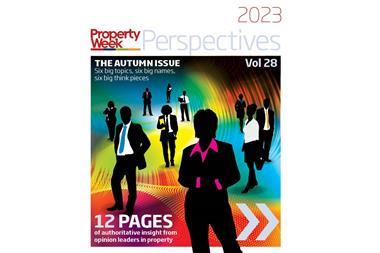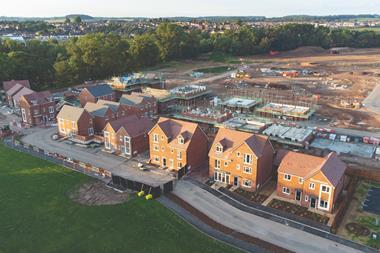The housing white paper of 2017 was produced to address what was provocatively described as a “broken housing market”.

Among other things it proposed granting automatic planning permission in areas where housing delivery is less than 25% of need; a tough new housing delivery test to ensure local authorities were not blocking developments without good reason; and the ability to seize sites where developers had planning permission but were not building.
The message to the property industry was clear: it needed to build more homes, more quickly. The basic ingredients of the development recipe of course have not changed: land, money and capacity.
It’s how those three are mixed together that matters. One year on from the housing white paper’s publication, some progress has been made and we are seeing a more strategic approach to business and public sector land holdings.
Public bodies and private sector businesses are also becoming more sophisticated in the way they manage their estates and the types of partnerships they enter into to realise value.
While there is still a place for the traditional joint venture where one party puts in the land and others put in the funding and expertise, some of those who are involved in more complex projects are starting to develop a more nuanced approach – a kind of ‘partnership 2.0’.
Notable trend
A notable trend is the acceleration of local authorities taking their commitment to housing delivery a step further and becoming developers in their own right. There are a variety of motives for this, such as providing more affordable or temporary housing or developing a private rental sector offer in their area.
Housing associations are thinking more strategically about their estates, too. One registered provider that GL Hearn works with has identified around 1,200 developable plots from within its existing land holding. This has been achieved by looking at outmoded assets and improving density. The additional income generated will be used to provide better facilities for the communities it serves.
The level of expertise in both the public and private sectors must be increased – and that is the key challenge for the year ahead
Given the need for more development land to meet the challenges set by the housing white paper – and its encouragement for local authorities to approve planning applications for new housing – investors are also broadening their horizons when it comes to the use classes in their portfolio.
A recent GL Hearn report identified a significant opportunity for retail warehousing schemes in London to be converted to residential. Approximately a third of all retail parks in the capital are within identified Opportunity Areas or Action Areas for housing, and many were developed in the 1990s and are now approaching lease events. Since the beginning of 2018 we have had three new instructions in this field. According to the report, high-density, comprehensive redevelopment of all of London’s 73 major retail parks could deliver up to 54,500 residential units.

Another notable trend is that investors are increasingly looking beyond traditional markets and opening up opportunities in the Midlands and the North West. While there is an emerging inflection point around mid-market developments of around £800 to £1,000/sq ft in London, there are strong flows of capital into regional centres. A good example is Birmingham, where capital value forecasts of around £550/sq ft from two years ago are now not looking quite so fanciful.
Despite these new approaches, we still need land, money and capacity. Significant strides have been made in terms of housing development in the past 12 months. But if this is to continue, the level of expertise in both the public and private sectors must be increased – and that is the key challenge for the year ahead.
New projects
The projects that are coming forward involve significant parcels of land and more complex partnership and funding arrangements than we have ever seen before. As such, the UK needs to boost its capacity in the professional and technical disciplines in order to take these opportunities through the planning process and into reality. For the property industry this means collaborating, sharing resources and running graduate programmes that span across the private and public sectors.
The excellence that undoubtedly exists in the sector can only be stretched so far. With such a raft of exciting and innovative schemes coming forward in the wake of the housing white paper, the last thing we want is to end up in a situation where they are not realised through a stretch around planning or development expertise.
Jules Bickers is housing consultancy director at GL Hearn

About GL Hearn
GL Hearn is a leading provider of real estate advisory services. We provide end-to-end planning, design, project and programme management in key sectors such as housing, retail and town centres , government property and occupier advisory.
Topics
PW Perspectives – Mipim 2018
- 1
- 2
- 3
- 4
- 5
- 6
- 7
- 8
- 9
- 10
- 11
 Currently reading
Currently readingHousing white paper: what has changed one year on?







































No comments yet